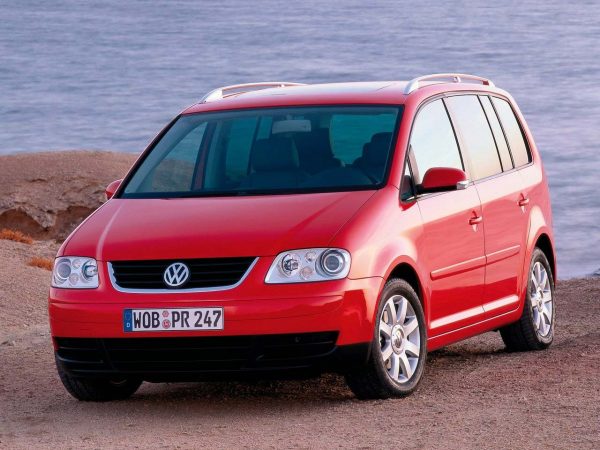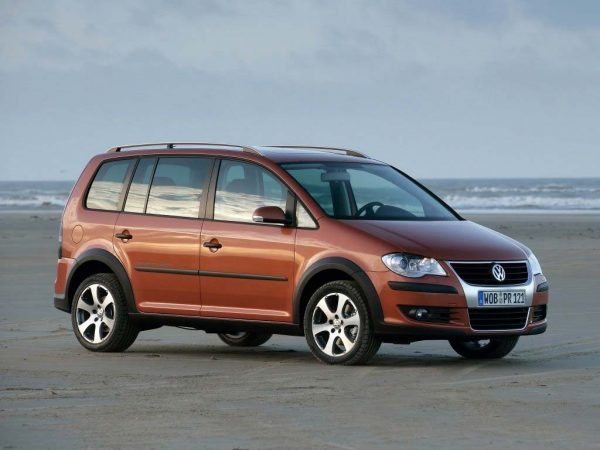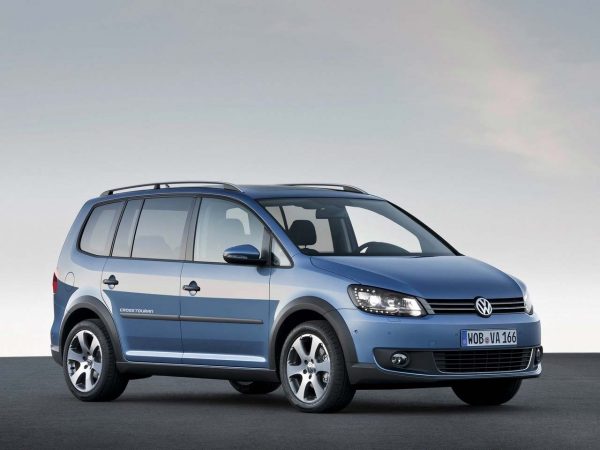
Features and test drive of Volkswagen Turan compact vans, history of model improvement
Content
- The history of improvement "Volkswagen Turan" - I generation
- Second generation Volkswagen Touran (2010–2015)
- "Volkswagen Turan" III generation (2016-XNUMX)
- Video: a detailed review of the 2016 Volkswagen Turan
- Test drives of modern Volkswagen Touran on gasoline engines
- Road tests "Volkswagen Turan" with diesel engines
By the beginning of the XNUMXst century, the world market was flooded with minivans produced by various automakers. Volkswagen was quite successful in selling its family car, the Volkswagen Sharan. At the same time, designers and designers had to make a cheaper and more compact version of the Sharan minivan. The result was the Volkswagen Touran, which is still a hit with young families all over the world.
The history of improvement "Volkswagen Turan" - I generation
The compact minivan appeared on display to motorists in early 2003. The compact family car was based on the platform from the 5th generation Golf - PQ 35. In order to be used effectively for landing seven passengers in 3 rows of seats, and even with comfort, the platform had to be extended by 200 mm. New equipment was installed for the assembly of the model. Because of this, separate areas had to be allocated on the territory of the Volkswagen plant, located in the city of Wolfsburg. As a result, a “factory within a factory” appeared, as journalists later joked. For employees, the VAG concern had to create a training center so that they could successfully master the new technologies introduced for the production of compact vans.

Restyling
In 2006, the model was updated. Traditionally, the front part has changed - the headlights and taillights have acquired a different shape. The radiator grill has changed its appearance. The bumpers have also been upgraded. The technical equipment has been expanded and updated. Motorists could choose any of 7 petrol and 5 diesel power units, ranging from 1.4 to 2 liters. The power range started from 90 horses for diesel and 140 hp. With. for petrol units. The motors were created using TSI, TDI, MPI technologies, as well as EcoFuel, which allowed the engines to run on liquefied gas.
Most European buyers preferred the 1.4 liter TSI engine. It develops power up to 140 horsepower, while being an economical and environmentally friendly engine. Good traction appeared already at low revs, which is more characteristic of diesel engines, and not gasoline units. Depending on the modification, compact vans were equipped with a manual transmission with 5 and 6 steps. In addition to cars with manual transmissions, Volkswagen Touran with robotic and automatic transmissions are popular in Europe. The weak point of the first generation cars is the insufficient soundproofing of the cabin.

As always with Volkswagen, the safety of passengers is given maximum attention. The first generation compact vans received the highest ratings - five stars, according to the results of the EuroNCAP crash test.
Second generation Volkswagen Touran (2010–2015)
In cars of the second generation, the main attention is paid to the elimination of shortcomings. So, the soundproofing of the cabin has become much better. Appearance - headlights, taillights, radiator grille and other elements of the new body, have acquired a modern shape. Cars still look quite modern. The aerodynamics of the body has been noticeably improved. As an option, a new Dynamic Chassis Control suspension has appeared, which significantly improves ride comfort. All the bumps in the road surface are worked out very well.
The line of power units has been modernized. Their number has become less - buyers were offered 8 options. Nevertheless, such an amount will satisfy any motorist. Offered in 4 diesel and gasoline units, with TSI and Common Rail technologies. Gasoline engines have a small volume - 1.2 and 1.4 liters, but their power ranges from 107 to 170 horsepower. Diesels have a larger volume - 1.6 and 2 liters. Develop effort from 90 to 170 horses. The efficiency and environmental friendliness of the engines are at the highest level. One of the 1.6-liter diesel units set a record for consumption efficiency among engines in its class.

The compact van was still produced in 5- and 7-seater versions. The volume of the luggage compartment with the third row of seats folded down is 740 liters. If you fold both rear rows, then the luggage volume becomes simply huge - about 2 thousand liters. Already in the basic set climate control, full power accessories and a radio tape recorder are provided. Optionally, you can get a transparent panoramic sunroof, a navigation system with a large display with touch control. In addition, the VAG concern began to introduce an automatic parking system controlled from a rear view camera.
"Volkswagen Turan" III generation (2016-XNUMX)
Volkswagen AG has decided to unify the styling of its lineup. In this regard, the front of the latest generation of Volkswagen Touran is very similar to its counterparts in the shop. This can be understood - this approach saves a lot of money for the German auto giant. The new compact MPV has acquired more rigorous forms. The shape of the bi-xenon headlights has changed - the corporate identity of VAG can be recognized even from afar. Traditionally changed chrome radiator. Salon has become more comfortable and spacious. It provides a lot of opportunities for transforming and moving seats.
The new modular MQB platform, on which the compact van is assembled, has made it possible to increase the size of the body, as well as the wheelbase. They were replaced by power units in which the latest technologies are introduced - the Start / Stop system and regenerative braking. The engines have become even more economical compared to the engines of the previous generation. For comparison, a 110-horsepower 1.6-liter diesel consumes only 4 liters per 100 km in mixed mode. The most economical gasoline unit eats, in mixed mode, 5.5 liters of fuel at a 100-kilometer distance.
Transmissions are offered 6-speed manual, as well as preselective robotic, with 6 and 7 gear shifts. Drivers will be pleased with the adaptive cruise control, which is increasingly reminiscent of an autopilot.

Video: a detailed review of the 2016 Volkswagen Turan
Test drives of modern Volkswagen Touran on gasoline engines
Below are video reviews and test drives of the new compact vans from Volkswagen - both on gasoline and diesel power units.
Video: across Europe on the new "Volkswagen Turan" with a gasoline engine of 1.4 l, part I


Watch this video on YouTube
Video: across Europe on the new Volkswagen Touran, gasoline, 1.4 liters, part II


Watch this video on YouTube
Road tests "Volkswagen Turan" with diesel engines
The diesel engines of the new Turans are quite nimble. The weakest of the turbocharged engines is capable of accelerating a compact MPV to a speed of 100 km / h in just over 8 seconds.
Video: test drive Volkswagen Touran 2016 with a 150 horsepower diesel engine, manual transmission


Watch this video on YouTube
Video: test drive of the new turbodiesel Volkswagen Touran with a 2-liter engine and manual transmission


Watch this video on YouTube
Video: snow test drive Volkswagen Touran Cross II generation 2.0 l. TDI, DSG robot


Watch this video on YouTube
Conclusions about the new compact van "Volkswagen Turan" are ambiguous. Modern automation systems and fashionable innovations have made cars quite expensive. Such a car will cost more than 2 million rubles, so the audience for these cars is financially secure families. But for a lot of money, the German automaker offers an economical and comfortable modern car that implements the latest innovative technologies.

